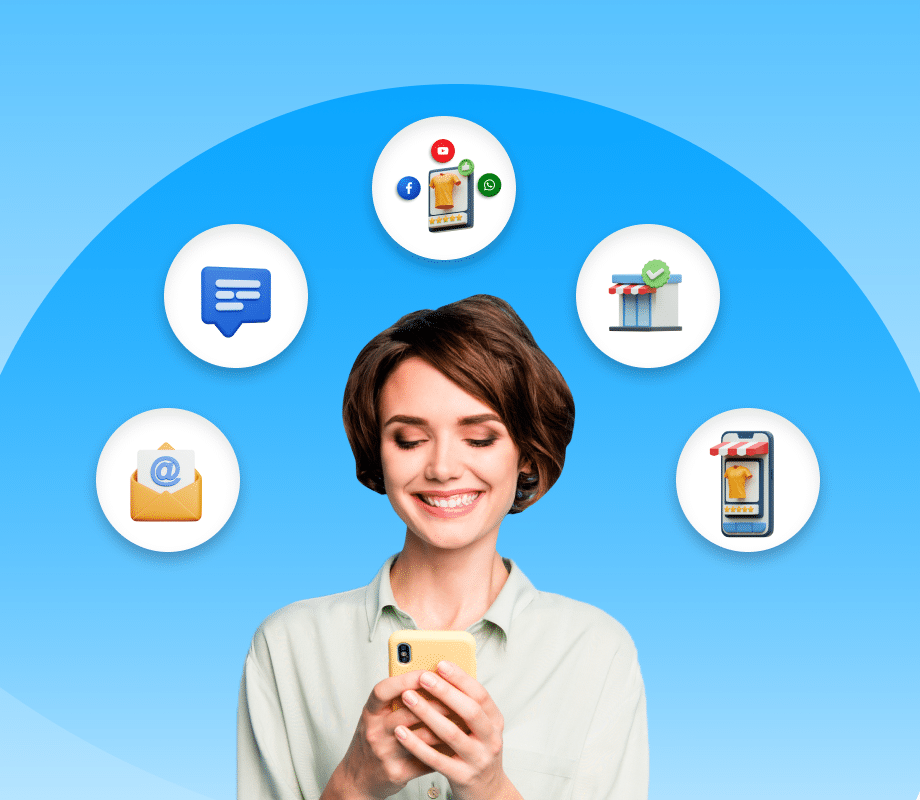Spend some time on any media channel—be it a newspaper, radio, social media, or any other Internet-based channel—and it won’t be long before you’re bombarded with ads trying to sell you a myriad of products. Brands spend a ton in such marketing efforts in a bid to get your attention and influence you into engaging with them. But how much of an impact are they making on you, the individual consumer, with these spray-and-pray tactics? Perhaps none at all. In fact, you may find such brand messages rather annoying.
Now, imagine receiving a highly personalized message on your mobile. The message not only recognizes you as an individual but also addresses your current shopping need. The brand, through this message, gives you an attractive offer on a product or category you’re interested in, and that too while you’re in a store pondering what to buy.
Which of the above two scenarios are you more likely to respond to? Obviously the latter. An Accenture study revealed that 91% of consumers are more likely to shop with brands that provide relevant offers and recommendations.
Online stores tend to enjoy greater success when it comes to personalizing shoppers’ experiences. With customer data at their fingertips, they can access granular insights related to every customer’s behavior, needs, preferences, and purchase pattern. This intel enables e-tailers to predict what a customer wants and make relevant offers and recommendations accordingly. This results in higher customer engagement and sales. And customers get the instant gratification that they seek.
Most offline retailers, who still rely on traditional marketing methods, aren’t as successful in delivering the same level of experience to shoppers. However, real-time in-store personalization can help them compete on an equal footing and craft delightful experiences for customers.
Understanding In-store Personalization
When an offline retailer starts identifying every customer as an individual, understanding their current context, and combining these insights with their historical behavior and tastes to deliver tailored recommendations, they have essentially started delivering in-store personalization.
However, all of this needs to be done in real-time while the customers are still weighing their options in a store. That would make it possible for retailers to make timely cross-sell or upsell offers that influence buying decisions and boost revenue. Retailers usually identify a shopper after they’ve reached the POS, but by this time the window of opportunity has long been shut.
But Is It Possible to Deliver In-store Personalization in Real-time?
The answer is yes, and lies in leveraging the great enabler – technology. A customer’s mobile phone and its Bluetooth capabilities along with the store’s WiFi and RFID tools can help offline retailers to achieve personalization that is nothing short of magical. Let us understand how from a few examples.
Scenario 1
Suzanne can access the free WiFi of a store on her mobile phone. Since her mobile number is already present in the store’s registry and linked to her past purchases, a buyer profile can easily be generated in advance that indicates what she normally shops for, when, and how often. It will also include data on if she chose a particular brand due to a sale or went with another despite an offer going on. This allows the store to send messages that are relevant to her.
“Hi Suzanne, running low on coffee pods? Do not miss an offer on Brand A in aisle number 3! Get up to 30% off on select products by mentioning your mobile number when you approach the biller.” Here, the system knows which day of the week Suzanne normally drops in to buy coffee pods and sends her a notification about an offer. It could even be made specific to address a particular flavor.
Scenario 2
Upon entering a mall, Jonathan gets a push notification to accept offers via Bluetooth. The store he frequents can then easily send him a personalized message to cross-sell another product related to his usual purchases.
“Good afternoon, Jonathan. Head over to The Gent. Get a 25% off on our brand-new selection of neckties when you buy any of our formal shirts/trousers. Use the coupon code GENTREGULAR at the time of billing.”
Scenario 3
Judith receives a push notification to send an SMS to a specific number so she can get personalized offers from a store. The SMS she sends enables the system to identify her as a first-time customer. The next SMS she receives is something along these lines: “Welcome to our store. Get 30% discount on anything you purchase with the coupon code THEFIRST.”
How Technology Enables In-store Personalization
All the aforementioned situations had the customer identified and sent relevant messaging that were targeted towards them. Doing all this in real-time requires analytics and machine learning that can work with enormous volumes of data from various sources.
Often, a rules engine in the background helps in identifying business conditions on moving and stationary data. Contextual targeting becomes easier when the retailer divides their customers based on demographic and psychographic analysis. Technology not only allows the retailer to drive personalization but also helps measure its effectiveness and improve upon the messaging as more and more data is collected.
Retailers can give their personalization strategy an added boost with mobile apps. Through apps, they can stay connected with customers and send them contextual messaging whether they’re inside or outside the store.
Beacon-based positional targeting has been implemented by many large retailers, within the store. Visual Light Communication (VLC) technology-based LED lights acting as beacons can interact with mobile phones, and they have seen increased adoption around the world.
Using beacons, retailers can even personalize based on the aisle a customer is in within the store. For instance, if a customer is in the wine aisle, they could receive an offer on their favorite red wine – let’s say, Merlot. And when the customer is in the pantry section, the beacon uses context to send another message recommending what pairs well with red wine, with offers for roasted Chicken.
Embrace In-store Personalization to Build Loyalty
In a world where customers are spoiled for choice, retailers should leverage technology to deliver relevant, contextual customer engagement. This is the key to building long-term loyalty and staying relevant in the market. What retailers shouldn’t do is spam a customer who’s trusted them with their information. Hyper-personalizing experiences throughout the entire customer lifecycle, across channels and touchpoints, is the way forward.
Check out our comprehensive omnichannel personalization guide to learn how to hyper-personalize customer experiences across both online and offline channels.
 in Sweden from 7 - 8 October 2025. Pre-book a meeting to connect with our
product experts.
in Sweden from 7 - 8 October 2025. Pre-book a meeting to connect with our
product experts.










